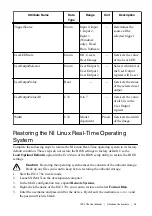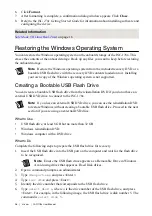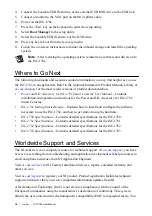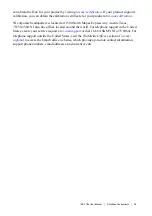
Determining the Trigger Delay
If the trigger delay is set longer than the untriggered minimum frame period, the trigger delay
value further limits the minimum frame period. When the trigger delay is specified in time
units, the software includes this in the calculation of the maximum frame rate indicator.
Otherwise, the expected rate of the edges for the delay is not known, and you must determine
the duration of the trigger delay.
Exposure and Lighting
The ISC-178x provides control of the image sensor exposure time through software. The
exposure time is the amount of time that light is allowed to strike the sensor to produce an
image. When light strikes the surface of the sensor, it dislodges electrons. As more light strikes
the sensor, more electrons are freed, creating a charge on the sensor.
For a given amount of light, the sensor collects more charge during a longer exposure time
than a shorter exposure time. Because the charge is what is read out to produce the image, it is
important to have an optimal amount of light and exposure time for your application.
Exposing the image sensor for too short of a time relative to the amount of light in the
environment results in a dark, low contrast image. Exposing the image sensor for too long of a
time relative to the amount of light in the environment results in a bright, low contrast image.
When the image sensor is exposed for an appropriate amount of time relative to the light in the
environment, acquired images will exhibit appropriate contrast to easily distinguish both dark
and light features. Contrast is a key factor in obtaining good results from image processing
algorithms.
In applications where the object under inspection is moving, the exposure time must be
carefully considered. If the object moves significantly during the exposure, the resulting image
is blurry and unsuitable for processing.
The maximum exposure time for imaging a moving object without blurring depends on the per
pixel spatial resolution and the rate of motion of the object. The per pixel spatial resolution is
the field of view divided by the number of pixels in the sensor. Together, this information can
be used to calculate the maximum exposure. Assuming the object is moving horizontally
across the field of view, use the following equation to calculate the maximum exposure time.
�
max
=
����������� × 2
������������� /�����������
where
E
max
is the maximum exposure time without blurring,
R
is the rate of motion of the object either horizontally or vertically,
FOV
is the field of view in the direction of motion, and
N
is the number of sensor pixels in the direction of motion.
For many applications that include moving objects, additional lighting is necessary to achieve
good image contrast due to the short exposure time required to avoid motion blur.
Additionally, in many environments, the ambient light conditions vary too significantly to
obtain consistent results without adding dedicated lighting. For example, in a building with
24
|
ni.com
|
ISC-178x User Manual
Summary of Contents for ISC-1783
Page 1: ...ISC 1783...
















































